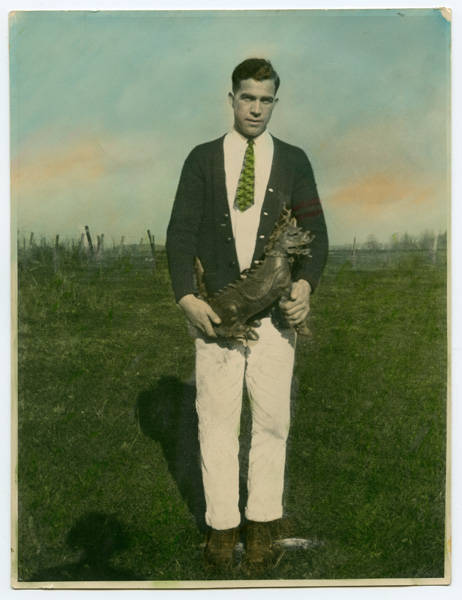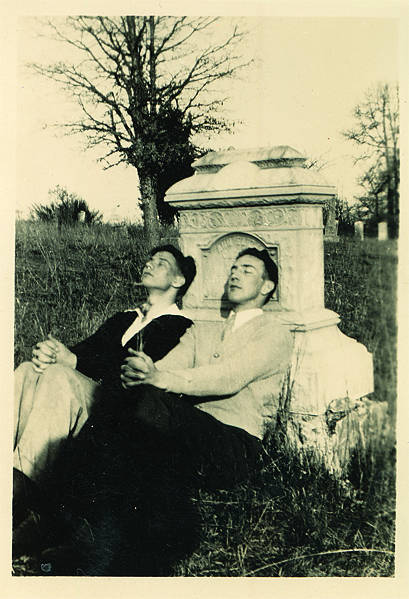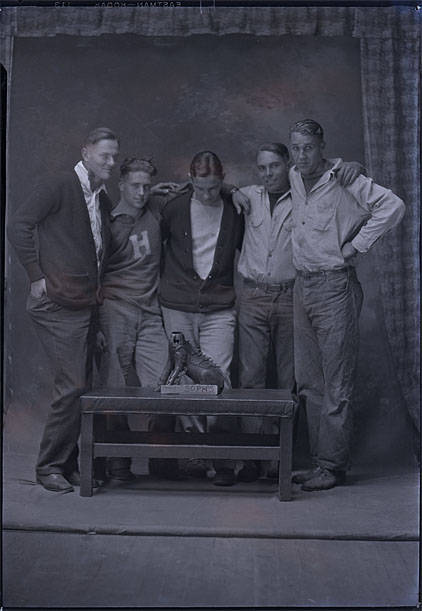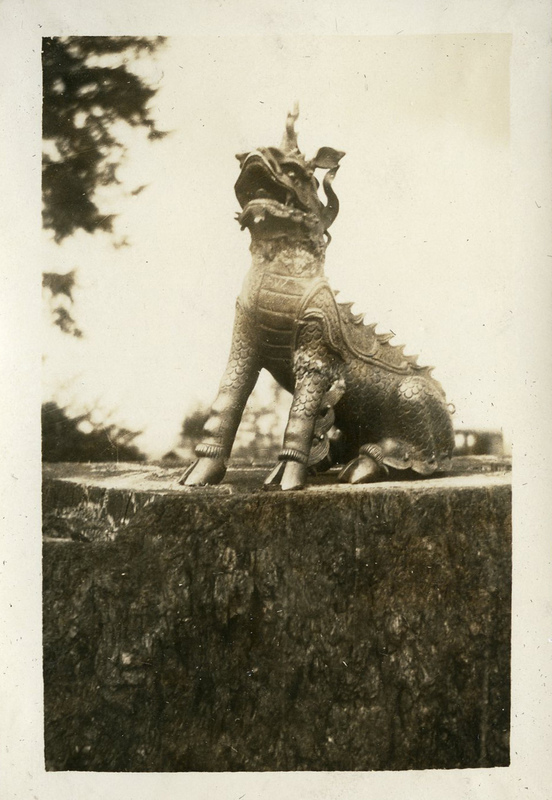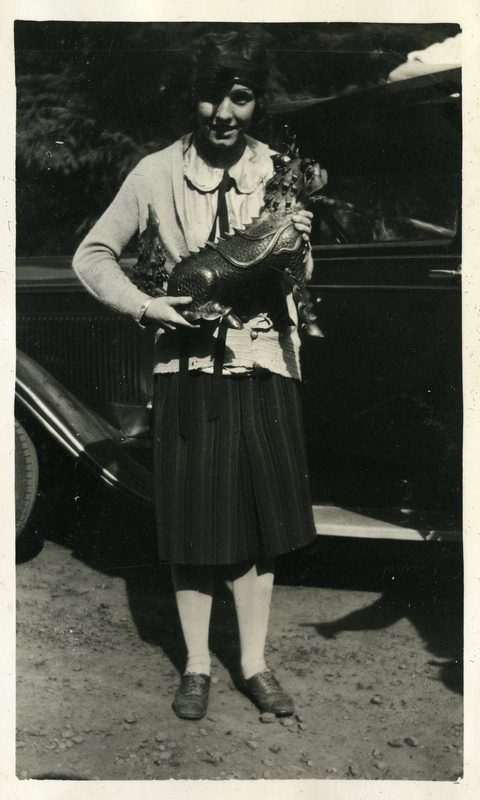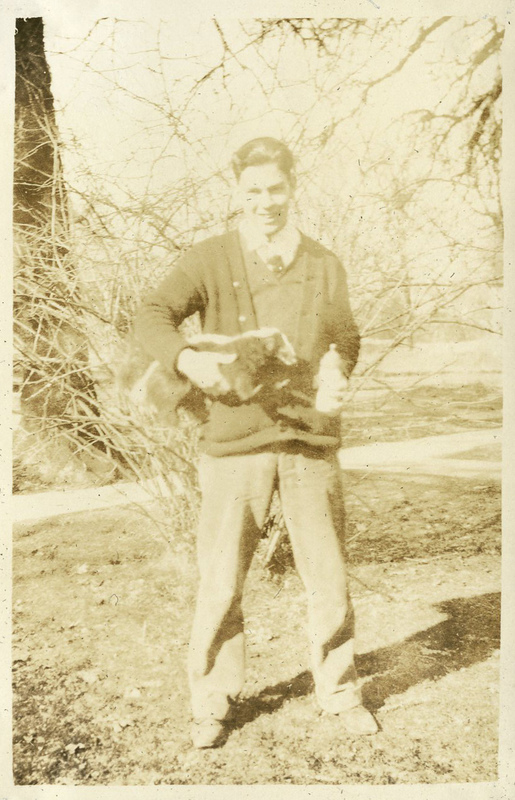1910s-1930s: Hide and Seek
In the early 1900s, Pacific University students were so secretive about Boxer's whereabouts that they hardly ever brought him out into public view.
This meant that by the year 1910 -- just over ten years after Boxer was first stolen from Marsh Hall -- many students barely knew anything about Boxer traditions. Older students were holding onto the statue and keeping his whereabouts secret. Younger students had never seen Boxer in person, and did not quite understand what all the fuss was about.
That changed in 1911 when a group of alumni brought Boxer back to Pacific and re-introduced the tradition to a new generation, as reported in local newspapers:
Tuesday night as the alumnni entered [the chapel in Marsh Hall], great was their surprise and pleasure to see "Boxer" standing on guard as in former times, having been placed there by members of the 1906 graduating class. At the close of the exercises two juniors made a dash for the platform and carried the "spirit" away. The move was so unexpected that no effort was made to intercept them. -Statesman Journal
Students loved the challenge of hiding and stealing Boxer from each other. As they got closer to graduation, they would teach the incoming classes about the tradition. They wrote articles for the school newspaper that explained how the tradition got started. They gave talks to incoming freshmen. They put photographs of Boxer in the yearbook and on the masthead of the newspaper. They even organized "Boxer Flashes," where they would quickly bring out Boxer under heavy guard for a few minutes, so that new students could catch a glimpse of Pacific's unofficial mascot.
A Boxer Flash could easily turn into a fight over the statue, though. Sometime -- probably in the early 1910s -- Boxer's tail became separated from its body when rival student groups tried to grab it. They reunited the pieces in 1914. This was the first known incident of pieces of Boxer being broken off and then put back together, but it would not be the last. Over the next fifty years, students repeatedly broke the bronze incense burner during battles over its possession. Boxer's left leg broke off in the 1910s. The head, which originally faced left and was attached to the body with a hing under the neck, also broke off around that time. It was welded back on within a few years, but they mistakenly fixed the head facing straight ahead. Many other pieces were periodically broken and then welded back on as the years continued, but Boxer looked a bit worse for wear after each repair.
Considering how hard students fought over Boxer whenever the statue appeared in public, it is no surprise that finding secure hiding places was important. Some places that Boxer is said to have been hidden during the first decades of the 20th century include:
- Dangled from a rope in a well (1899)
- In an empty space under the eaves of an attic, wallpaper hiding the access hole (1899-1900s)
- Detached head & body were hidden in a flour bin (1916-1918)
- Under a local bridge (ca. 1925)
- Beneath the floorboards of a local candy shop (1930s?)
- Under a metal plate in a large grave stone (1938)
Like much of Boxer lore, some of these hiding places may be no more than tall tales. Rumors and stories about Boxer were a large part of the statue's place in student culture!
One rumor that has persisted over the years is the tale of Boxer's travels during WWI. Numerous articles have claimed that during the war, a student from Pacific who joined the service brought Boxer with him to France. Sources suggest that something like this did indeed happen. A photograph album that belonged to student Greta McIntyre Sheeley (Class of 1920) includes a series of photographs of students holding the statue -- several of them with interesting captions. A note there states that two students, Verle Stanley and Thomas Fowler, had Boxer while serving in the war:
Stanley had his head and body, when he was called-up to fight during World War I. He hid Boxer in a flour bin at Mrs. Brown's house on the Pacific University campus. Fowler had Boxer's tail. He took the tail with him when he was called-up. The two pieces were reunited when Stanley and Fowler returned to Pacific University after the war ended in November, 1918.
Thus while Boxer's head and tail rode out the war in a flour bin, his tail very likely did indeed make its way to the trenches of the Great War, and survived.
Boxer attained a firm position as a student-controlled symbol of school spirit. Pacific's administrators, on the other hand, had very little say in how Boxer was used. They had not held the statue for more than a few hours at a time since 1899. When the university decided it needed to adopt an official mascot in 1921, Pacific's administration adopted a rival symbol: the Badger. Reportedly, the choice was made after a student yelled out, "They're fighting like Badgers!" at a football game. (See Splendid Audacity, p. 77)
Badger, rather than Boxer, would be the university's official mascot until 1968, but it never quite succeeded in overshadowing the original College Spirit.

